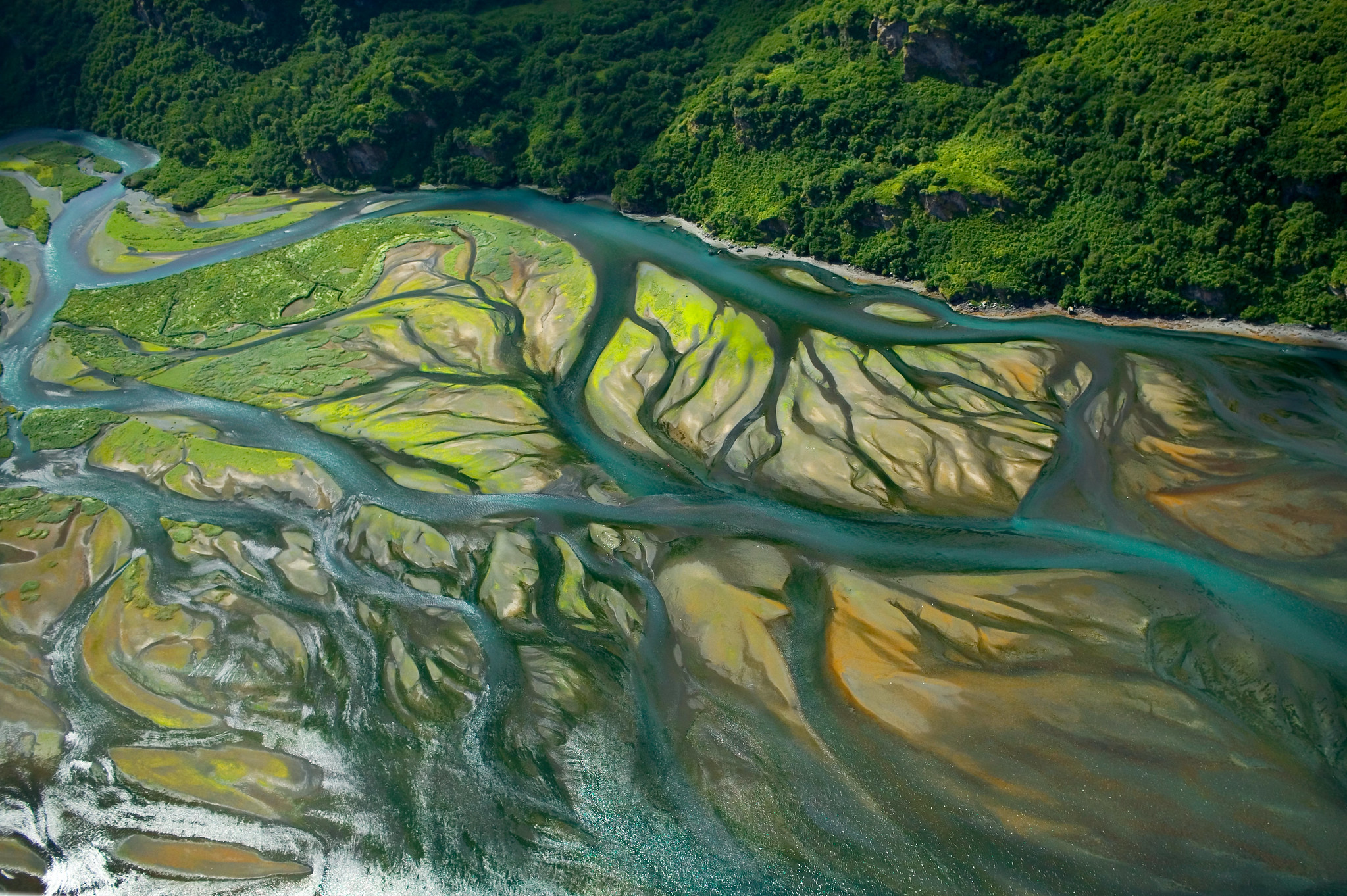Water
 If the continental United States represented the entire surface of the earth, water would cover as much as every state west of the Mississippi River, with enough left over to cover the state of New York. Of the total volume of water on earth, about 97% is saltwater, and only about 3% is fresh. 98% of the freshwater is locked away in groundwater, ice caps, and glaciers, meaning only 2% of the world’s freshwater is available for human use. That’s about 148 gallons per person on Earth. In comparison, a 10-minute shower can take between 20 and 50 gallons of water.
If the continental United States represented the entire surface of the earth, water would cover as much as every state west of the Mississippi River, with enough left over to cover the state of New York. Of the total volume of water on earth, about 97% is saltwater, and only about 3% is fresh. 98% of the freshwater is locked away in groundwater, ice caps, and glaciers, meaning only 2% of the world’s freshwater is available for human use. That’s about 148 gallons per person on Earth. In comparison, a 10-minute shower can take between 20 and 50 gallons of water.
The Earth typically does not gain or lose water in substantial amounts, so the water you use likely existed, in some form, before the first living creature evolved. While the amount of water on the planet does not change significantly, the amount of water in parts of Earth’s system can fluctuate wildly. In addition, water is not distributed evenly across the land surface. The result is that some areas are climatically wetter or drier than others, which shapes local agriculture and restricts which crops and livestock can prosper in a given region.
In the United States, some areas are expected to become drier as the climate, including average temperature and average precipitation, changes. Conversely, other areas are predicted to become wetter. The frequency of extreme weather events--severe floods, persistent drought, and severe storms--is also expected to change in some regions. The effect of climate change on water availability and wet and dry seasons has numerous potential implications for agriculture, especially in areas where the climate is expected to become less suitable to sustained agricultural production.
-
Living Shorelines
Rutgers University helps partners, U.S. Fish and Wildlife Service, The Nature Conservancy and the Partnership for the…
-
Northeast Climate Hub Webinar Series
This webinar series builds on capacity within USDA to deliver science-based knowledge and practical information to…
-
Changing Water Dynamics in Alaska
Examination of changes in water dynamics, the resulting consequences for ecosystems and people, and management options…
-
Responding to Ecological Drought in the Intermountain Region
In March 2017, the Forest Service Intermountain Region held a drought adaptation workshop to share state-of-science…
-
Dealing with Drought in Forests, Grasslands, and Rangelands
Longleaf pine tree plantations that are approximately 25 years old have received their first commercial thinning on the…
-
Teach Kids about Farming, Climate, and Soil with Sr. Sapo and the Caribbean Climate Hub
The video promotes agriculture and illustrates how food production is influenced by the climate through the experiences…
-
Cecarelli Farms Talks Data Driven Decision-Making
“[It's] amazing the difference a few miles can make. You see, if you’re in a valley, you could be in real trouble…
-
Drought Effects on Forests and Rangelands in the US Caribbean
Water quality and scarcity are of great concern across the U.S. Caribbean. In recent years Puerto Rico and the U.S.…
-
Water Resources in a Changing Climate
Our Nation contains regions where agricultural producers contend with an overabundance of water and regions frequently…










